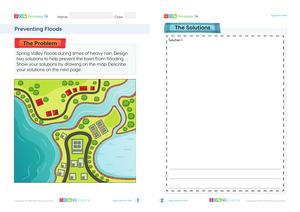Begin the lesson by introducing the concept of tsunamis as giant ocean waves that can move onto land, altering the Earth's surface rapidly.
Go to the LessonLearning Objectives
- Understand what a tsunami is and how it forms.
- Identify the causes of tsunamis, such as underwater earthquakes and volcanic eruptions.
- Recognize the potential impact of tsunamis on human structures and the environment.
- Explain the importance of tsunami warnings and the necessary safety actions to take.
Introduction and Hook
Engage students with a brief discussion on their prior knowledge of natural disasters, focusing on tsunamis and their impact.
Direct Instruction
Explain the formation of tsunamis, highlighting causes such as underwater earthquakes and volcanic eruptions.
Guided Exploration
Facilitate a class discussion on the impact of tsunamis on human structures and the environment, using real-world examples.
Explore the importance of tsunami warnings and necessary safety actions with students, emphasizing the role of scientists in monitoring and predicting tsunamis.
Hands-On Activity
Engage students in a hands-on activity where they create a simple model to simulate a tsunami using a shallow tray of water and a small object to represent land.
Independent Practice
Assign students to research a recent tsunami event and write a brief report on its causes, impact, and the response to the disaster.
Check for Understanding
Conduct a class quiz to assess students' understanding of tsunami formation, causes, and impacts.
Try the QuizReview and Reflection
Have students reflect on what they have learned about tsunamis and discuss how this knowledge can be applied to real-world scenarios.
Assessment and Extension
Use the 'Rapid Changes to the Earth’s Surface' assessment to evaluate students' understanding of natural disasters, including tsunamis, and their impact on the environment.




